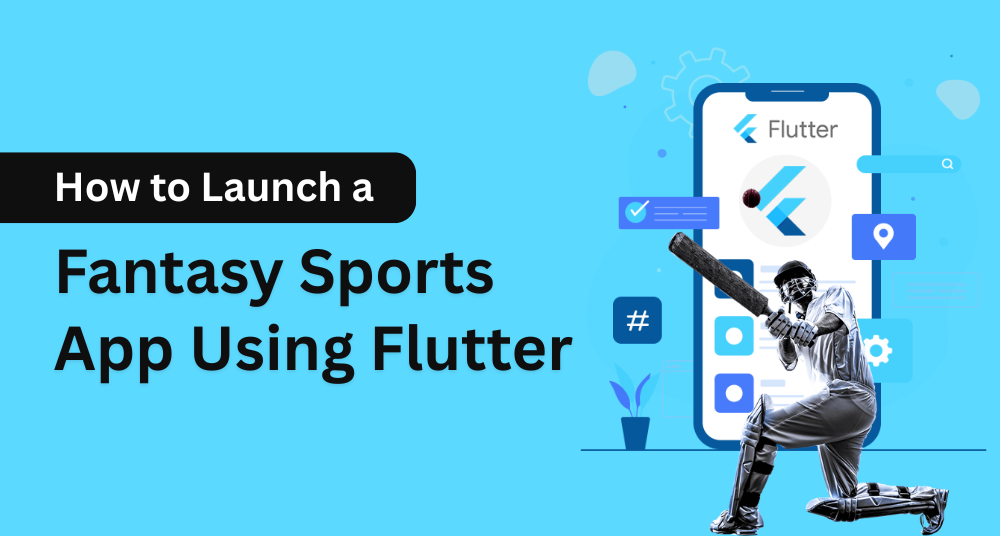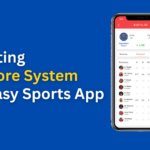Fantasy sports apps have become a popular way for sports enthusiasts to engage with their favorite games, teams, and athletes in a virtual environment. Whether it’s for football, basketball, cricket, or any other sport, fantasy sports apps allow users to form their own teams, track player performances, and compete with friends or strangers for fun and prizes. However, building a fantasy sports app requires a deep understanding of both the sport’s mechanics and the underlying technical aspects of app development.
In this guide, we’ll explore how to build a cross-platform fantasy sports app using Flutter—a framework that allows you to create apps for both iOS and Android with a single codebase. We will cover the development process, technical considerations, and best practices to ensure a smooth and scalable solution.
What is Flutter?
Flutter is an open-source UI software development kit (SDK) created by Google. It is used to build natively compiled applications for mobile, web, and desktop from a single codebase. With its rich set of pre-designed widgets and an easy-to-understand architecture, Flutter is quickly becoming the go-to tool for developers seeking cross-platform app development.
One of the main advantages of using Flutter for building fantasy sports apps is the single codebase that can be deployed on both iOS and Android. This significantly reduces development time and ensures that the app’s functionality is consistent across platforms. Additionally, Flutter is known for its performance, beautiful UI components, and its growing ecosystem of libraries, which makes it an excellent choice for building complex apps like fantasy sports platforms.
Key Components of a Fantasy Sports App
Before jumping into the fantasy sports app development process using Flutter, let’s break down the core features and components that a fantasy sports app needs to have:
User Authentication and Authorization
- Sign Up/Login: Users need to create accounts and securely log in to the platform. You will require a robust authentication mechanism, such as Firebase Authentication or OAuth.
- Social Login Integration: Allow users to log in using social media accounts like Facebook, Google, or Twitter.
Player and Team Management
- Roster Creation: Users should be able to create their fantasy team by selecting real players from different teams.
- Team Edits: Users should have the ability to make roster changes, such as swapping injured players or making tactical adjustments.
Live Scores and Stats Tracking
- Player Performance: Display live statistics of the players, such as runs, goals, points, and other relevant metrics.
- Game Updates: Provide real-time updates on live matches and player performances.
Leagues and Competitions
- Public and Private Leagues: Users should be able to join public leagues or create private leagues with their friends.
- Leaderboard: Track and display rankings based on fantasy team performance.
Fantasy Scoring System
Implement a scoring system that translates real-life performances into fantasy points. Each sport will have its own unique scoring rules.
Push Notifications
Send push notifications to users for game updates, player performance updates, league notifications, and reminders about upcoming matches.
Payment Integration (Optional)
If you plan on monetizing the app, you might want to integrate payment gateways like Stripe or PayPal for entry fees or prize payouts.
Backend Infrastructure
A reliable backend is necessary to handle user data, scores, player statistics, and other relevant data. You could use a serverless architecture or traditional back-end solutions like Node.js with MongoDB or Firebase.
Why Use Flutter for Developing Fantasy Sports Apps?
When it comes to developing cross-platform mobile applications, Flutter has quickly gained popularity due to its advantages in performance, flexibility, and developer productivity. Here are some of the main reasons why Flutter is an excellent choice for building a fantasy sports app:
Single Codebase for Multiple Platforms
With Flutter, developers can write a single codebase that works on both Android and iOS devices. This eliminates the need to develop separate apps for different platforms, saving time and resources.
High Performance
Flutter apps compile to native code, which ensures that the apps run with high performance, even when handling real-time data updates like scores or player stats in a fantasy sports app.
Rich UI
Flutter provides a wide variety of pre-built widgets and powerful tools for creating beautiful, customized UIs. A fantasy sports app needs a responsive and visually engaging interface, and Flutter’s widgets make it easy to build one.
Hot Reload
Flutter’s hot reload feature allows developers to see the changes they make in the code immediately reflected in the app without having to restart it. This speeds up the development process, which is especially useful when working on complex UIs.
Community Support
Flutter has a large and growing community, meaning developers can easily find solutions to common issues and access a vast library of plugins for various functionalities, from managing databases to integrating third-party APIs.
Integration with Firebase
Flutter integrates seamlessly with Firebase, which is often used for backend services in mobile apps. Firebase provides cloud storage, real-time databases, user authentication, and notifications, all of which are critical features for a fantasy sports app.
Development Steps for Building a Fantasy Sports App with Flutter
Building a Fantasy Sports app using Flutter requires a structured approach to ensure scalability, performance, and a user-friendly experience. Flutter, with its cross-platform capabilities, allows developers to create high-quality apps for both Android and iOS from a single codebase. Below are the essential development steps for creating a Fantasy Sports app:
Requirement Analysis and Planning
The first step is gathering the necessary requirements. Define the core features of your app, such as user registration, player selection, team creation, live scores, leaderboards, and user profiles. Planning will also involve identifying the fantasy sport (e.g., football, cricket, basketball) and understanding the target audience. Consideration should be given to monetization strategies, such as advertisements, premium subscriptions, or in-app purchases.
Setting Up the Development Environment
Install Flutter SDK, set up the development environment, and choose an IDE (like Visual Studio Code or Android Studio) for efficient coding. Also, set up Firebase or any other backend service for user authentication, database management, and cloud storage. Ensure the necessary packages for state management, such as Provider, Riverpod, or Bloc, are installed to handle app logic effectively.
Designing the User Interface (UI)
With Flutter’s wide range of widgets and layout options, the UI design plays a critical role in the user experience. Design the app’s structure, including screens for registration, player stats, team creation, and game outcomes. Create prototypes using tools like Figma or Adobe XD, and translate those designs into Flutter widgets. Ensure the design is responsive and provides a seamless experience across different devices.
Implementing User Authentication and Profile Management
For user authentication, integrate Firebase Authentication or any other backend service that supports secure login and registration. Allow users to sign up through email, social media accounts, or Google. Create a user profile page where they can view their stats, teams, and participate in different fantasy leagues.
Integrating Fantasy Sports Data
To make the fantasy game realistic, you need real-time sports data. Use third-party APIs like Sportradar, Sports Open Data, or similar to fetch player statistics, match schedules, scores, and more. Set up automated systems to update this data in real-time, so players can make informed decisions during the game.
Creating Core Game Mechanics
The core mechanics of a fantasy sports app include creating teams, adding players to the team, and managing points based on player performance in real-life matches. Develop algorithms to calculate points, rank users, and create leagues. Users should also be able to join leagues and compete against each other.
Real-Time Features and Notifications
Integrate real-time features like live match scores, player performance updates, and real-time notifications for game events, such as when a player’s score changes or when a match begins. Firebase Cloud Messaging can be used to send push notifications to users.
Testing and Debugging
Rigorous testing is crucial to ensure the app’s performance, especially when handling large amounts of real-time data. Use Flutter’s testing framework to write unit tests, widget tests, and integration tests. Test the app on different devices and simulators to identify and fix bugs or performance issues.
Deployment and Maintenance
After thorough testing, deploy the app to the Google Play Store and Apple App Store. Monitor the app for any issues, user feedback, and performance bottlenecks. Regularly update the app with new features, bug fixes, and ensure that the sports data is consistently updated.
Final Words
Building a cross-platform fantasy sports app using Flutter is an exciting and challenging project that involves numerous components ranging from UI design to complex backend integration. Flutter offers a powerful, unified framework that makes it easier to create apps that work across multiple platforms with a single codebase.
By following the steps outlined in this guide and focusing on core features like user authentication, real-time scoring, league management, and a smooth UI, you can create a compelling and engaging fantasy sports app. Additionally, by integrating modern tools like Firebase for backend services and payment gateways for monetization, you can ensure that your app not only functions well but also provides a seamless user experience.



